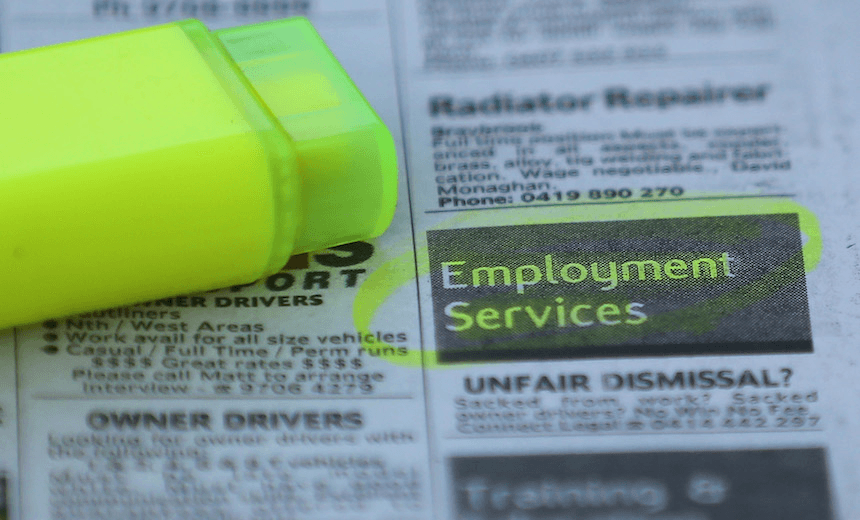Thirty years of economic reform and the gap between Māori and Pākehā employment rates is wider than ever, says business columnist Joshua Hitchcock.
I have never experienced unemployment. Since graduating in 2007 I have always found a job when I wanted one. That is not to say I have always worked these past 10 years. Periods of employment have been followed by mini-sabbaticals – periods where I recharge and pursue my personal projects. Even now, I am in the middle of a four-month sabbatical, travelling, researching and writing on the Māori economy, and considering my next career move when I return to New Zealand in December.
This is not meant as a brag but an acknowledgement of my privilege before I discuss the issue of Māori unemployment. I do not know what it is like to be unemployed. I cannot even begin to understand the impact it has on a person. I cannot speak of a personal history of unemployment in an effort to humanise the statistics. Because unemployment is a major crisis confronting Māori and the statistics need to be humanised. We need to realise that there are real people behind these numbers. Communities devastated by high unemployment rates. But it is a crisis that is rarely acknowledged. We don’t see the personal stories of the effects of unemployment and the lengths people have to go to in order to find meaningful work. We need these voices in our media, confronting us everyday, forcing our politicians and business leaders to properly address this issue.
In 1986, the Māori unemployment rate was 2.57 times the Pākehā unemployment rate. According to the September 2017 Household Labour Force Survey, the Māori unemployment rate is currently 2.83 times the Pākehā unemployment rate. After 30 years of economic reform, two Labour governments, and nine years of Māori Party influence, the inequality of employment between Māori and Pākeha has gotten worse.
The unemployment rates have come down over that time, from 14.9% to 9.9% for Māori and from 5.8% to 3.5% for Pākehā. But the gap has remained. At least the situation is not getting much worse, right? Wrong. Yes, the Māori unemployment rate dipped below 10% for the first time since 2008 last quarter but the persistent gap between Māori and Pākehā means that all 30 years of economic reforms have managed to achieve is to entrench the institutional discrimination of Māori in the workforce. 34,400 Māori are unemployed. We comprise 16% of the New Zealand population but account for 27% of the number of unemployed.
There are regional disparities as well. Compare Canterbury with Northland. The Māori unemployment rate in Canterbury is 6.6%, 1.89 times higher than the 3.5% recorded for Pākehā. The low level of Māori unemployment in Canterbury is no surprise given the rebuild activity but there remains a large gap between the Māori and Pākehā unemployment rates. The situation is dire in Northland. 15.1% of Northland Māori are unemployed, compared to only 3.5% of Pākehā. Two provinces with identical unemployment rates for Pākehā but vastly different rates for Māori. What is going on?
And how do we address this issue? To achieve equality, a Māori unemployment rate of 3.5% would require an additional 22,300 jobs to be created for Māori. That is the scale of the challenge facing policy makers and the new Minister of Employment, Willie Jackson. Together with the Minister of Regional Economic Development, Shane Jones and the Minister of Māori Development, Nanaia Mahuta, a comprehensive policy approach is required. The positive is that we have three experienced Māori leaders in these roles. The challenge will be in delivering for Māori. And if we do not act fast then the next generation will face the exact same issues.
Data from March 2016 showed that approximately 20% of Māori aged between 16-24 were not in employment, education, or training. There is a lot to like in the policy details of the new government: fee-free training and education and an emphasis on regional development for starters both have the potential to address this issue. But we clearly need a new approach, because the approach of the past 30 years has not worked. And if we do not act now, then we will fail another generation of Māori.
As I said at the outset, these are just the statistics. Māori unemployment and the sheer numbers of rangatahi Māori not in employment, education, or training is a national crisis. It is also a crisis being experienced by other ethnic groups in New Zealand as well. The unemployment rate for Pacific peoples is 9.4% and for those of Middle Eastern, Latin American and African descent is 8.9%. New Zealand would not tolerate a national unemployment rate of 10%. We should not tolerate it when it is that high for minority ethnic groups in New Zealand. Behind the statistics are people and their whānau who are struggling with a life of unemployment. And we all know he aha te mea nui o te Ao.
